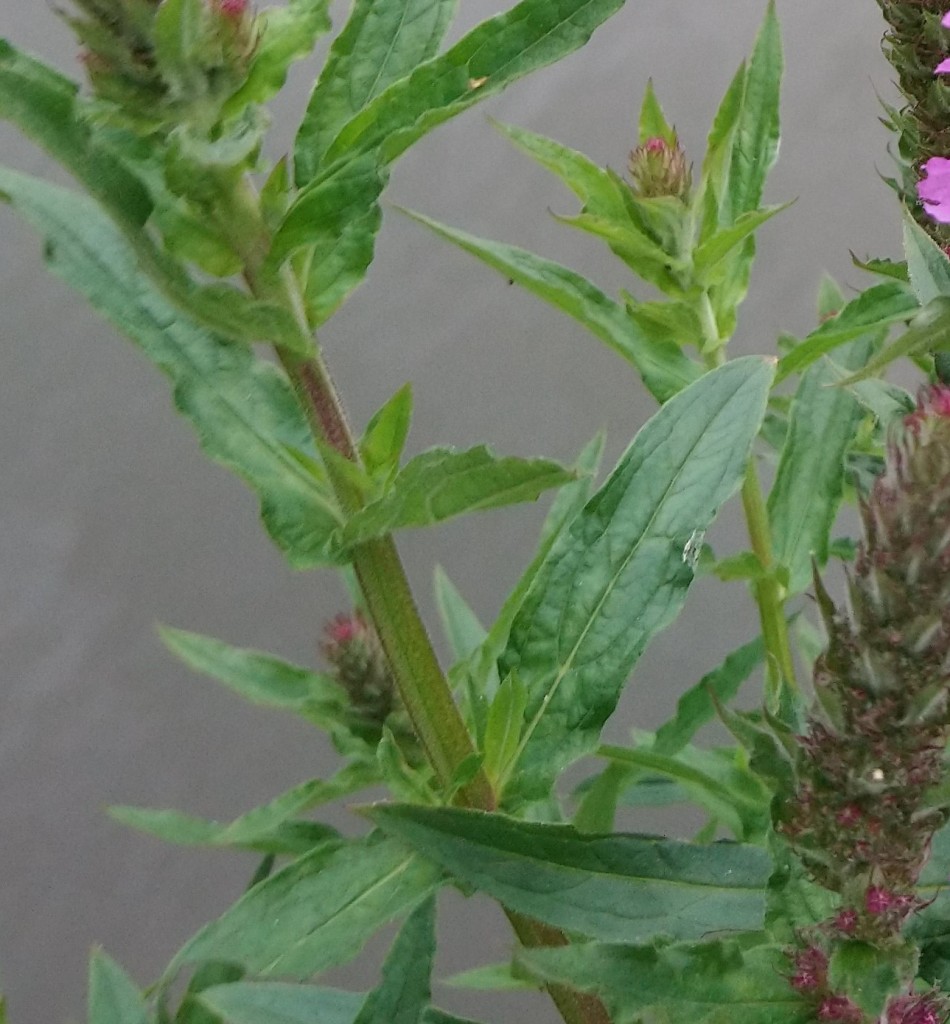
[216] Lythrym salicaria, Purple Loosestrife
Introduction
Lythrum salicaria, Purple Loosestrife, is a wildflower with tall spiky inflorescences of purple-red flowers.
It is also known as Spiked Loosestrife or Purple Lythrum.
It is not related to other plants called Loosestrife, for example Lysimachia vulgaris, Yellow Loosestrife.
Most species of Lythrum are also called Loosestrife, as are those in the genus Lysimachia, which is not related (or similar looking!)
Taxonomy
Kingdom – Plants
Division – Vascular Plants
Class – Angiosperms (Flowering Plants)
Order – Myrtales
Family – Lythraceae
Subfamily – Lythroideae
Genus – Lythrum
Scientific Name – Lythrum salicaria
Cultivated varieties are available.
Name
The other Loosestrifes in the genus Lysimachia get their common names from a false back formation of the Greek name lysimakheion. In Sixteenth-Century English it was taken as if from lysis, ‘loosening,’ and makhe, ‘battle’ or ‘strife,’ although it was actually named after Lysimachus (360-281 BC) who succeeded Alexander the Great.
I am not sure how Lythrum salicaria and other species of Lythrum became called Loosestrife but there is a suggestion that at one time they were also called Lysimachia.
Lythrum comes from Ancient Greek lythron, ‘gore,’ – either from the use of its flowers to produce a red-black dye or from the colour of its leaves in autumn. Salicaria comes from Salix, the genus name of [307] Willow, from the shape of its leaves.
Description
Lysimachia salicaria is a perennial plant that grows to one or two metres in height, often as a clonal colony where many erect stems come from a spreading root mass. Its elongated leaves, which grow directly from the stem, are similar in shape to some species of Willow.


The red-purple flowers are clustered tightly along the top of the stem,
As for other some species of Lythrum, Purple Loosestrife has more than one type of flower. Three different types have male parts (stamens and styles) of different sizes and each flower can only be pollinated by the other two types – this prevents self-fertilization. We will find another example of Heterostyly in [277] Primrose.They flower throughout summer and when the seeds develop, the leaves turn bright red in the autumn.




Habitat and use
Purple Loosestrife is found over Eurasia and parts of North Africa and Australia.
It likes wet locations such as ditches, meadows and lakesides.


It has been used traditionally as a medicinal herb but this seems to be true of every native plant known a few hundred years ago.
It is cultivated as a garden plant with several cultivars selected for varying flower colours. It is particularly suited to wet conditions but can also tolerate drier conditions.
It has been introduced and has become widely naturalised in North America and has also been introduced to New Zealand.
Other Notes
I have been delaying writing this in the hope of finding some more pictures. Most of them come from the lakeside of a local park.
See also
We will not meet any others in the same family.
The flower spikes may be superficially similar to Purple [210] Toadflax but are significantly larger.
